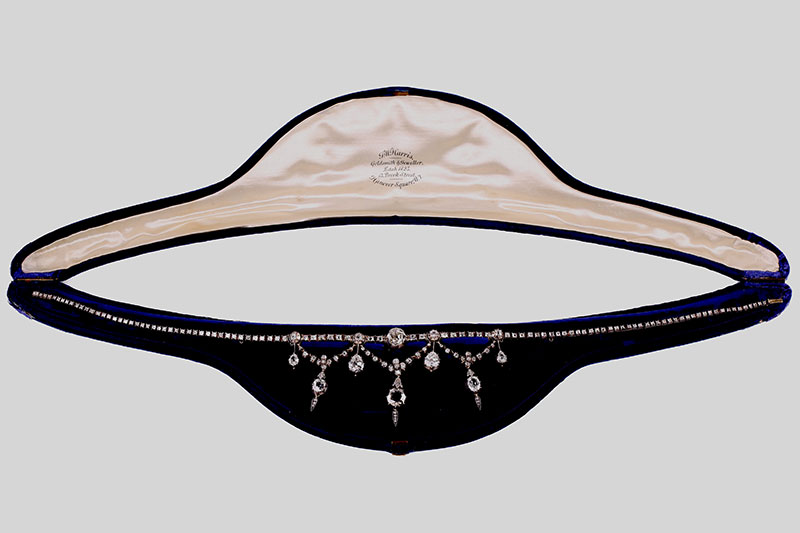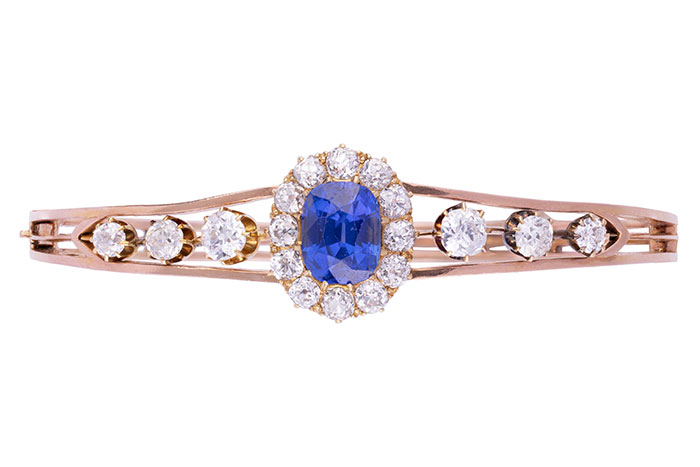What Jewellery was Popular in the Victorian Era?
During the early years of Queen Victoria's reign, jewellery was deeply entwined with themes of love
22/07/2025
The Victorian era was a remarkable period in jewellery design, spanning 64 years from 1837 to 1901. As a historical period, it came at the end of the Industrial Revolution, a time of social, cultural, and technological change, and the fashions that reflected these changes evolved over the years. Jewellery was heavily influenced by Queen Victoria, who dictated what was desirable, and the era saw dramatic shifts in fashion and sentiment. Pieces from this time reflect the evolving tastes and emotional undercurrents of the Romantic, Grand, and Aesthetic periods, each distinguished by unique motifs, materials, and craftsmanship.
During the early years of Queen Victoria's reign, jewellery was deeply entwined with themes of love, sentimentality, and nature. The Romantic period (1837-1860) saw the popularity of cameos, carved from materials such as shell, coral, and agate. These miniature portraits or mythological scenes often adorned brooches and pendants, embodying romantic ideals.
A Victorian Kashmir Sapphire and diamond cluster hinged bangle
Nature-inspired motifs were prevalent, reflecting Queen Victoria's fascination with flowers and foliage. The serpent motif, associated with eternal love and wisdom, became hugely popular when the Queen was given her engagement ring from Prince Albert in the shape of a snake. Coloured gemstones, such as turquoise and garnets, were also fashionable during this period.
The mid-Victorian era, known as the Grand period (1860-1885), coincided with Queen Victoria's mourning following the death of Prince Albert in 1861. Her grief profoundly influenced the jewellery of the time, giving rise to mourning jewellery.
Mourning jewellery often incorporated motifs such as weeping willows, urns, and forget-me-nots, symbolising remembrance, and loss. Hairwork jewellery flourished, with elaborate designs using the braided or woven hair of a loved one set under glass. Despite their melancholic undertones, these sombre jet, onyx, and enamel pieces were exquisitely crafted and hugely popular during the Grand period.
 An important late Victorian diamond garland necklace
An important late Victorian diamond garland necklace
Another intriguing trend was insect jewellery, reflecting Victorian fascination with the natural world. Beetles, butterflies, and dragonflies, crafted in vibrant enamel or studded with gemstones, became fashionable adornments for brooches and earrings, sometimes set 'en Tremblant' with a small spring so that the insect would appear alive as the wearer moved.
Although Queen Victoria stayed in mourning for the rest of her life, the last years of her reign were marked by the Aesthetic period (1885-1901), which marked a departure from the heavy sentiment of the Grand period. Jewellery designs became lighter and whimsical, inspired by the emerging Arts and Crafts and Art Nouveau movements. Popular motifs included irises, peacock feathers, and the stylised female form, showcasing a fresh and exciting approach to design.
 A Victorian yellow gold diamond and emerald bangle
A Victorian yellow gold diamond and emerald bangle
Victorian-era jewellery remains highly fashionable and collectable today and is frequently referenced in current high-fashion collections. The specialist team of gemmology qualified valuers at Dawsons Auctioneers have years of experience selling a wide range of Victorian jewellery at our monthly Fine Jewellery sales. If you are thinking of selling any Victorian jewellery, we would be delighted to provide an accurate, complimentary, and current market valuation in person or online. Whilst our in-house team will dynamically market your jewellery directly to a huge global audience of known collectors and buyers to help secure the highest possible price for your Victorian jewellery.
Related Articles
Is Antique Jewellery Worth Anything?
How Can You Tell if Jewellery is Victorian?
Is Victorian Jewellery Valuable?
Do you have any Victorian jewellery that you are considering selling?
With a global audience of over 10 million, Dawsons can ensure that you achieve the best price at auction when you sell jewellery.
Get in touch today for sales advice. Our Jewellery Team would be delighted to help you:
